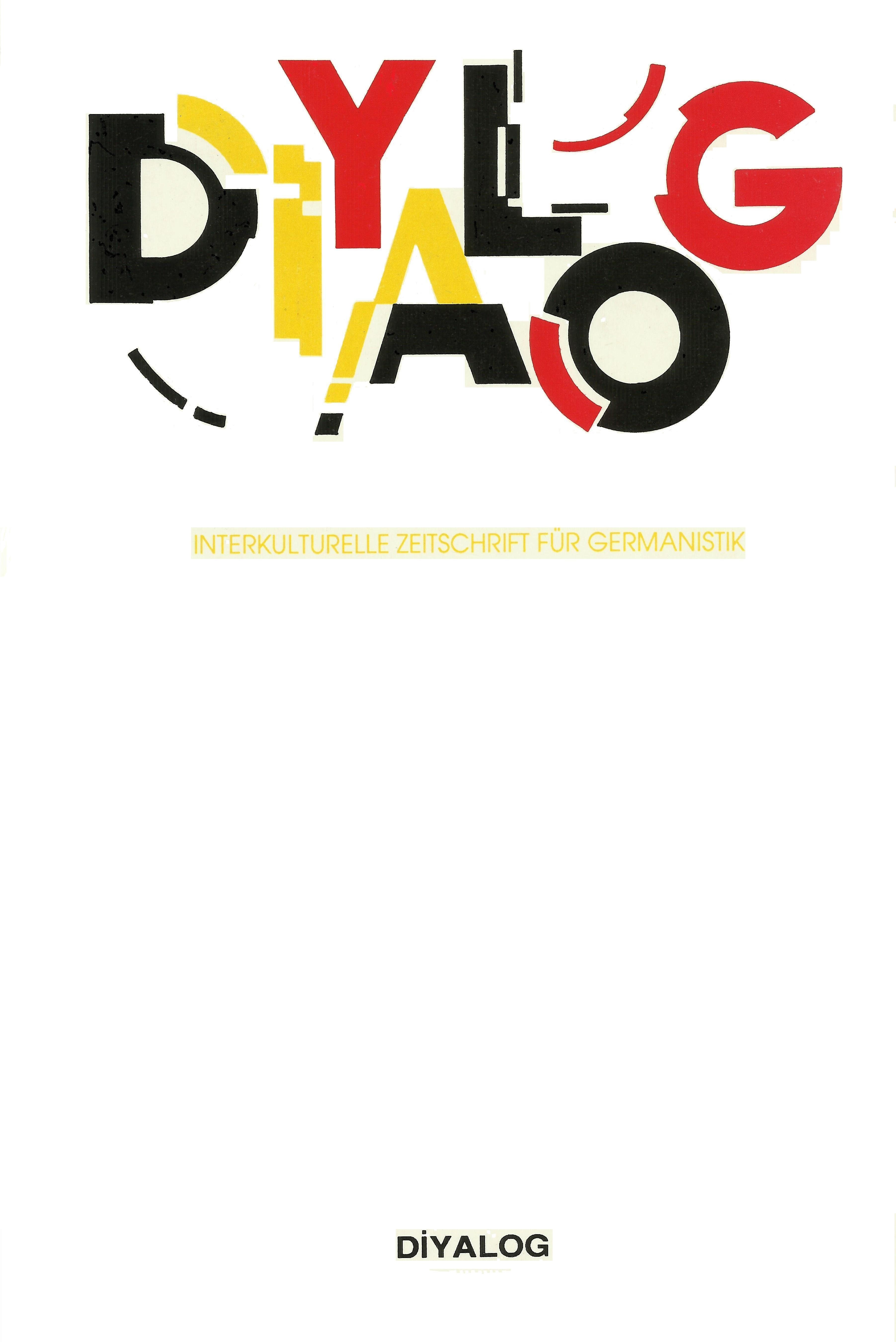Ardıl Çeviri Eğitiminde Not Almanın Önemi ve Not Alma Duyarlılığının Pekiştirilmesi
Ardıl çeviride not alma eğitimi konusuna ilişkin Türkçe kaynakların oldukça sınırlı olmasıyla birlikte, not alma, özellikle ardıl çeviri eğitiminde üzerinde durulması gereken önemli bir konudur. Çevirmen adayları büyük oranda, duyduğu her şeyi not alma ile anladığını not alma arasındaki ayrımı algılayacak duyarlılığa henüz sahip olmamaktadırlar. Sözlü çeviride not almanın ilkelerine ilişkin, yabancı kaynaklarda birbirinden farklı çok sayıda görüş olmasına rağmen, çıkarsama yoluyla bazı temel ilkeler belirlemek, özellikle sözlü çeviri eğitimi açısından fayda sağlayacaktır. Çalışmanın amacı, sözlü çeviride not almanın önemini irdelemenin ve söz konusu temel ilkeleri somutlaştırmanın yanı sıra, sözlü çeviri eğitiminde not alma duyarlılığını geliştirici bir açılım sunmakta belirginleşmektedir. Bu çalışma kapsamında önerilen alıştırma, öğrencilerde not alma duyarlılığının ve bilincinin gelişmesine katkı sağlayacak nitelikte olup, duyduğunu anlama, ifade gücü, belleği güçlendirme, bilgi donanımı ve genel kültür konularına da didaktik anlamda önemli ölçüde katkılar sağlayacak nitelikte bir alıştırmadır.
Anahtar Kelimeler:
not alma, ardıl çeviri eğitimi, dinlediğini anlama, çeviribilim
The Relevance of Taking Notes in Consecutive Interpreting and Intensifying the Sensibility for Taking Notes
It is a fact that taking notes, especially in consecutive interpreting education, plays a crucial role. However, the availability of Turkish resources for note taking in consecutive translation is very limited. Translator candidates do not yet have the sensitivity to perceive the distinction between taking a note of everything they hear and taking notes that they understand. Despite the fact that there are many different views on the principles of taking notes in interpreting, there are different opinions on foreign sources; some inference will benefit especially in terms of oral translation education. The aim of the present study is to enlighten the significance of taking notes in verbal conversation and to provide a breakthrough that enhances the sensitivity of taking notes in verbal translation education as well as to embody the basic principles in question. The exercise recommended in the context of this study is a quality that will contribute to the development of the sensitivity and awareness of students in taking notes and is an exercise to provide meaningful contributions to listening, empowering expressing, memory strengthening, information equipment and general culture issues in a didactic sense.
___
- Aktaş, Tahsin (2013): “Notationssprache als Gedächtnisunterstützendes Mittel beim Konsekutivdolmetschen”. Diyalog. Interkulturelle Zeitschrift für Germanistik, 2013/1, s. 81-90.
- Andres, Dörte (2002): Konsekutivdolmetschen und Notation. Frankfurt am Main: Peter Lang Verlag.
- Bührig, Kirstin (1999): “Konsekutives Übersetzen Englisch-Deutsch”. Gerzymisch-Arbogast, Heidrun / Gile, Daniel / House, Juliane / Rothkegel, Annely (Hg.): Wege der Übersetzungs – und Dolmetschforschung. Tübingen: Gunter Narr Verlag, s. 241-266.
- Chen, Sijia (2016): “Note-taking in consecutive interpreting: A review with special focus on Chinese and English literature”. The Journal on Specialised Translation (26), s. 151-171.
- Doğan, Aymil (1999): “Konuşmalardan Not Alma Becerisine Genel Bakış”. Çeviribilim ve Uygulamaları Dergisi, Aralık 1999, Ankara Hacettepe Üniversitesi, s. 55-64.
- Doğan, Aymil (2003): Sözlü Çeviri. Çalışmaları ve Uygulamaları. Ankara: Hacettepe Doktorlar Yayınevi.
- Durukan, Emra (2016): “Çeviri Odaklı Karşılaştırmalı Dilbilgisinin Temel Çeviri Becerisi Edinimindeki Önemi.” Journal Of Language Education And Research, 2016 (2) s. 41-52.
- Gile, Daniel (1991): “The processing capacity issue in conference interpretation”. Babel 37, S. 15-27.
- Gile, Daniel (1995): Basic Concepts and Models for Interpretor and Translator Training. Amsterdam/Philadelphia: John Benjamins.
- Ilg, Gérard (1988): “La prise de notes en interprétation consécutive. Une orientation générale”. Paralleles 9, s. 9-13.
- Kalina, Sylvia (1998): Strategische Prozesse beim Dolmetschen. Theoretische Grundlagen, empirische Fallstudien, didaktische Konsequenzen. Tübingen: Gunter Narr Verlag.
- Kapp, Volker (Hg.) (1984): Übersetzer und Dolmetscher. Tübingen.
- Kautz, Ulrich (2000): Handbuch Didaktik des Übersetzens und Dolmetschens. München.
- Kirchhoff, Hella (1979): “Die Notationssprache als Hilfsmittel des Konferenzdolmetschers im Konsekutivvorgang”. Mair & Sallager (eds.): Sprachtheorie und Sprachenpraxis. Festschrift für Henri Vernay zu seinem 60. Geburtstag, s. 121-133.
- Laukova, Jana (2005): “Zur Rolle der Dolmetschernotizen beim Konsekutivdolmetschen, Ein Erfahrungsbericht”. Linguistik Online 2/05, s. 93-98.
- Matyssek, Heinz (1989): Handbuch der Notizentechnik für Dolmetscher. Ein Weg zur sprachunabhängigen Notation. Teil 1 und Teil 2. Heidelberg: Julius Groos.
- Özbay, Murat (2005): Bir Dil Becerisi olarak Dinleme Eğitimi. Ankara: Akçağ Yayınları.
- Rozan, Jean-François (1956) [19592, 19733]: La prise de notes en interprétation consecutive. Genf: Georg.
- Seleskovitch, Danica (1975): Langage, langues et mémoire. Etude de la prise de notes en interprétation consécutive. Lettres modernes, Cahiers Champollion. Paris: Minard.
- Seleskovitch, Danica / Lederer, Marianne (1989): “Pédagogie rasionnée de l’interpretation”. Collection Traductologie 4. Paris: Didier Erudition.
- Şahin, Abdullah / Adın, Gülnur / Sevim, Oğuzhan (2011): “Cornell Not Alma Tekniğinin Dinlenilen Metni Anlamaya ve Kalıcılığa Etkisi”. Dumlupınar Üniversitesi Sosyal Bilimler Dergisi, Nisan (29), s. 29-36.
- ISSN: 2148-1482
- Yayın Aralığı: Yılda 2 Sayı
- Başlangıç: 2003
- Yayıncı: Germanistler Derneği
